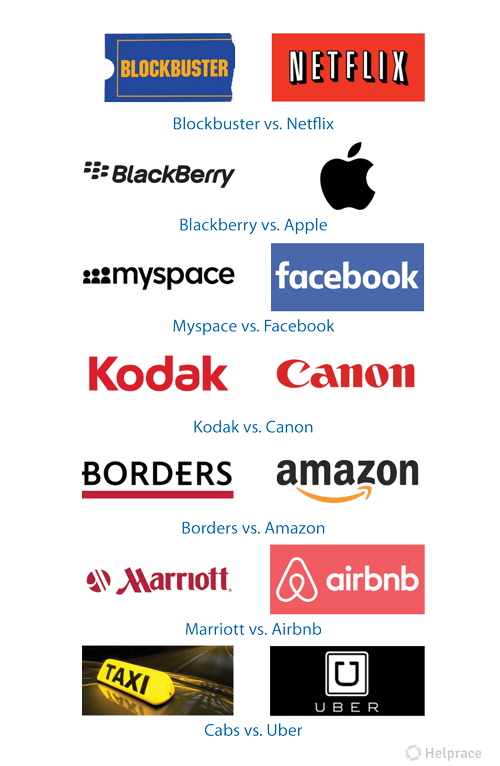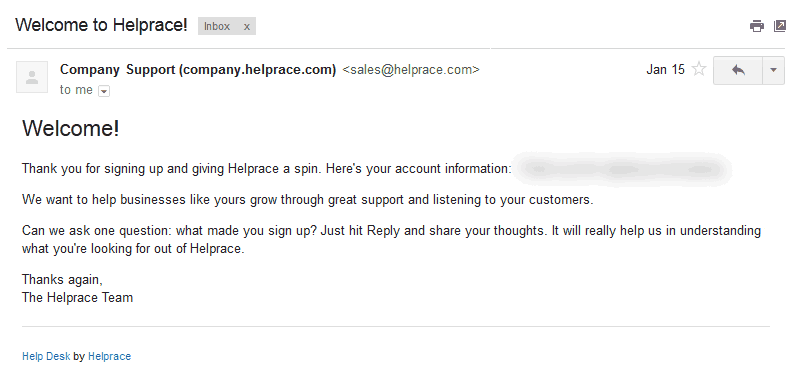-
Why Blockbuster Failed: They Didn’t Care About Customers
Tue, 6 Dec 2016, in Customer Feedback
Enjoying this one? You might also like What Every Business Can Learn From Ikea and Apple
 photo credit Christopher Paquette
photo credit Christopher PaquetteBack in 2000, one sunny day in Dallas was going to go down in history.
The idea was to get Blockbuster to run the Netflix brand in the stores and for Netflix to promote Blockbuster’s name online. Blockbuster declined – and did so unapologetically. Yet by 2004 John Antioco (Blockbuster’s CEO) sensed that Netflix was becoming a significant threat and thought to change back some of his company’s policies. However it was too late. Netflix shares skyrocketed from $10 to over $120 while Blockbuster was forced to file for bankruptcy.
Read More: What a Family Diner Taught Me About Customer Service
Blockbuster sat atop the movie rental industry and made enormous amounts of money (by charging its users late fees, no less). Yet – by ignoring what really mattered to their customers at the time, they were blind to how the industry was shifting from right under their feet.
Real, honest customer sentiment is really hard to gauge. Even if customers are happy with your product, they like staying silent and don’t particularly feel the need to engage with you.
It’s customer sentiment, not the money they spend that makes customers stick aroundThis makes customer behavior such as churn much more difficult to anticipate. Research shows that on average, about five interactions are needed in order to convince customers to go out of their way to share their experience.

What’s even more surprising is that for every customer that brings up a suggestion (whether it’s a feature suggestion, a bug fix or improvement) there are at least 30 other users that have the same idea. The only difference is they choose not to speak up.
It also doesn’t help that today’s companies have a vague understanding of what customer feedback is – much less why they need it. They don’t know how to listen and collect exactly what it is that their customers are telling them.
What is customer feedback?
Typically, customer feedback is constructive criticism and opinions customers share with you regarding your product or service. They could give you insights on their unique experiences – how things are or aren’t working out for them.
Steve Jobs once famously said:
People don’t know what they want until you show it to themIt wasn’t an isolated statement. His toed the same line years prior:
We built [the Mac] for ourselves. We were the group of people who were going to judge whether it was great or notYet those who understood Job’s vision, the unequalled creative team and the resources he had at his disposal – knew it was difficult to argue with him. Jobs created a cult following and an exhaustive design process that elevated and reinforced that following through product.
So why did Apple thrive while Blockbuster bite the dust?
One of them understood the intricacies of the problems their customers faced.
Consider that in the early 80s most people considered it necessary for a computer to have multiple ports and wires that would go all over the place. To the average consumer, it was simply incomprehensible that an already excellent product could also have fundamental flaws. And not long after that, when CD players offered the best music experience, it was difficult to imagine something like the iPod coming along.

So unless you’re working on the next iPod (which admittedly many businesses aren’t) you can’t afford not to tap into customer sentiment. That’s because listening and understanding what customers want leads to building and selling what they want.
Then why did Blockbuster, a multinational corporation with a team of talented leaders mess up so bad?
Think way back – when digital cameras were in their infancy. They didn’t take good pictures and were really bulky. How could Kodak make money in the digital world when customers were asking for better film and smaller, lighter film cameras?
Before Uber came along, a taxi company’s only way to get more customers (aside from lowering the price) was to have a car ready quickly. No one was asking for cleaner cars or more courteous drivers.

And so an opportunity emerged for someone to come along who listens in a different way and builds a product that customers want to use. It’s a clear case of customer demand and company vision falling out of sync with each other. By the time the company wants to do something – it’s too late as the market has already established its course.
Many established, successful market leaders failed simply because they gave customers more of what they asked forCustomer feedback allows you to re-iterate and re-visit your strategy every time you learn something new, ensuring your product stays desirable and relevant. You may even uncover hidden markets before your competitors do.
How to collect and act on feedback with tools you already use
You may be surprised to find out that you can collect customer feedback with the tools you already use – or without any specialized tools at all:
1. Just ask for it!
Whether it’s an email, phone call, social mention, blog comment, your job should be uncovering every possible opportunity to talk with customers.
Read More: Customer Service is More Perception, Less Reality
When you establish dialogue with customers – regardless of the reason for conversation – you start looking at the situation from their context. It’s easier to ask questions like: “What problems are you currently facing? What would you like to see next? Does this workaround help?” This leaves the door open for candid feedback that would otherwise be lost.
Here are some more ideas to help you phrase your questions:
- What are your users focused on? If you think it’s better to work on feature A, B and C because it doesn’t yet exist on the market – but people are only using feature A, how do you know they need all these features?
- Focus on specific “win” and “lose” examples. Was there something in your software that went critically wrong, or something that streamlined an important workflow situation? Taking note of specific situations can help you shed light on how others use your product.
- Ask about what’s done on the sidelines. Everyone is focused on problems they need to solve, and may neglect other elements of work. By understanding the objectives customers are trying to reach, you’ll better be able to suggest shortcuts and – if not – then uncover areas of improvement within your product.
2. Craft a welcome email
When users sign up, they already think that your product is worth their time. Smart entrepreneurs seize the moment to discover as much as possible about their newly registered users. As a result, the most important email you can send is the one that encourages them to start a discussion with you:

While there’s no way to be a mind reader, the best thing to do is ask a question that invites dialogue at the end of your email. You’ll find that a good portion of people will respond – and their answers will be interesting and insightful.
It’s estimated that 90% of online purchases are not completed due unanswered questions or a loss of interest in the product. Don’t take that chance and make sure you respond to every email promptly.
3. Utilize your support interactions
Every time customers reach out to support, use the opportunity to ask them about their experience with your product so far. If you’re using help desk software with a tag function, you can organize and prioritize emails that deal with topics you’re keeping track of.
Read More: 6 Email Management Habits That Reduce Stress
Routing and tagging functions are essential so that other members of your team (such as content marketers and product managers) can leave private comments. When whole company effort is used to utilize knowledge of the customer, it leads to better decisions being made.
4. Use a feedback tab on your site
In order to keep customers happy, it’s a good idea to give them the right answer in the shortest amount of time. One of the ways to do it is by offering a feedback tab with a self-service component – right on your website.
This way, customers can find an appropriate answer themselves – and if no satisfactory answer was found – they are asked to leave a comment. Such subtle “nudges” encourage site visitors to leave a few lines about your product.
5. Don’t forget social listening
If you’re looking to understand what’s going on in the marketplace, you’ll need to venture on social media sooner than later. Here are things to look out for:
- Brand name. If you have abbreviations or acronyms in your brand name, make sure to keep track of their mentions, too.
- Competitors. If customers have passionate conversations with your competitors, they may have interesting stories to share with you, too.
- Keywords and messages that are relevant to your industry. You never know where a good story could be lurking!
How much resources should you allocate to collecting feedback?
Ultimately, being able to rapidly respond to customers’ day-to-day concerns is and implementing important bug fixes in time will take precedence over occasional feature improvements suggested by your customers.
Yet building an active customer feedback strategy based on dialogue is something that every growth-focused business should pursue. No matter who your customer is – their unique thought process and user experiences… That is, if you don’t want to end up like Blockbuster.
So regardless of the type of feedback you receive – take it in, understand where it’s coming from and keep it handy for later down the road.
Read More: How One Ice Cream Shop Growth Hacked Its Way to Success
Tags: customer feedback



